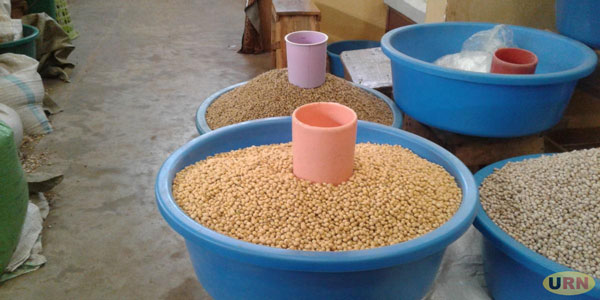
Gulu, Uganda | THE INDEPENDENT | The Ministry of Agriculture, Animal Industry and Fisheries (MAAIF) has encouraged farmers in the Acholi Sub-region to tap into the vegetable oil market as the country grapples to sustain edible oil production.
The government is currently implementing the National Oil Seeds Project, a seven-year initiative rolled out in 2021 that aims to support smallholder farmers in oil seed production, value addition, and market linkages.
Acholi Sub-region is among the 81 districts in the country benefiting from the US$160 Million (approximately 600 billion shillings) project co-funded by IFAD, Heifer International, and Kuehne Foundation.
The Minister of State for Agriculture Rtd Maj. Fred Bwino said the country has for the past years been spending huge money in importing vegetable oil, yet it has the potential to boost its local production.
In 2020 alone, the country imported 381,320 Metric tons of vegetable oils worth US$289.8 million of which palm oil accounted for 97% of the quantity imported.
Speaking to local government leaders from the Acholi Sub-region on Wednesday in Gulu City, Maj Bwino said the government has to that effect taken the initiative to boost vegetable oil production using sesame, groundnuts, sunflower, and soya beans.
He said through the project, the government is injecting a total of 100 billion shillings into each of the six hubs in Busoga, Acholi, West Nile, Lango, Mid-Western, and the Karamoja region covering 81 districts.
In the Acholi Sub-region specifically, the government is targeting to work with 10,000 farmers from the 19 clusters with each farmer expected to produce 1 ton of vegetable oil seed.
Cumulatively from the six hubs, the government is projecting to produce 600,000 metric tons of vegetable oil that surpasses the domestic edible oil demand.
According to government data, presently Uganda produces 80,000 metric tons of vegetable oil, yet approximately 410,000 metric tons of vegetable oils per year is required to meet its domestic demand.
Stephen Byantwale, the Director of Crop Resources at MAAIF noted that the Acholi Sub-region presents a unique potential in the production of vegetable oil since it is already popular for growing sim sim.
He said farmers should tap into the market for the exports of oil seed crops citing that they fetch significantly higher prices in the European market but cautioned, on quality processing.
In the European market according to Byantwale, a kilogram of sim sim costs between 5.32 Euros and 7.62 Euros.
During the consultative meeting that attracted district agricultural officers, district chairpersons, production officers, and Chief Administrative Officers, the leaders however raised concerns that the project has taken too long to reach the intended beneficiaries.
They also highlighted challenges that have affected its implementation ranging from climate change, pests and diseases, poor storage facilitates, and delayed land opening by farmers among others.
Amuru District Chairperson Michael Lakony noted that for close to three years since the inception of the project, the implementers had only been focusing on the “software” component of the project leaving out the benefiting farmers.
His counterpart, the Omoro District Chairperson Douglas Peter Okello said the oil seed project, especially on soya beans was affected in the district due to the limited processing facilities to complete the project’s value chain.
He said without the value chain of the oil seed project being complete, the benefiting farmers will continue to be exploited by middlemen.
However, in response, Maj. Bwino acknowledged the slow pace of the project implementation within the hubs citing they had been undertaking procurement and human resource mobilization.
Acholi Sub-region is also expected to benefit from 151 km of community access road construction worth 28 billion shillings under the market linkage infrastructure component of the project. This is part of the 2,500 km of community access roads designed under the project to link farmers to markets.
****
URN
 The Independent Uganda: You get the Truth we Pay the Price
The Independent Uganda: You get the Truth we Pay the Price





